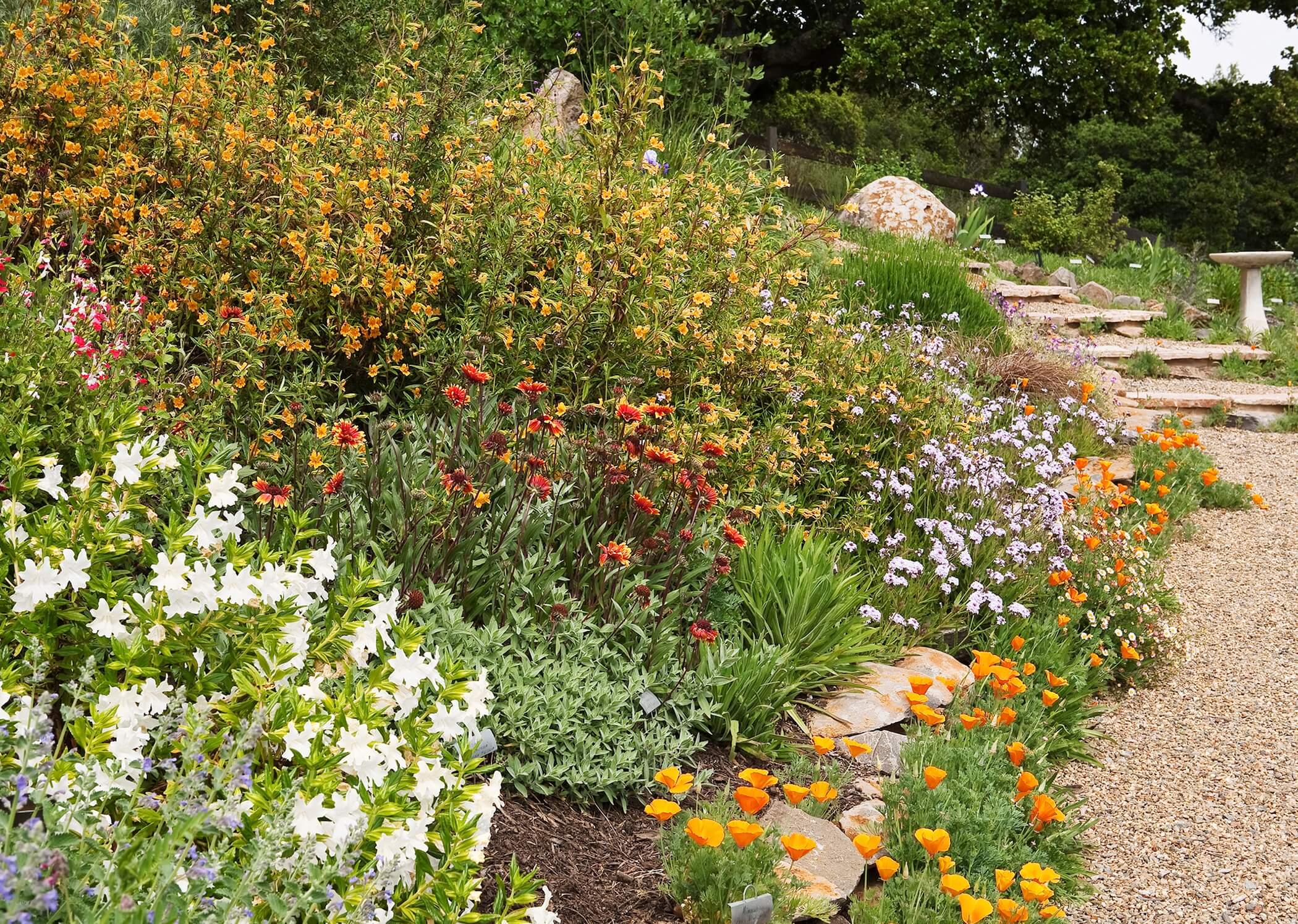I’ve always had a fascination with fecundity; a desire to make more of something, especially when an abundance of possibilities is so obvious. Plants offer so many opportunities to be fruitful. Now, with plenty of space at our new nursery, and access to gardens full of ‘mother plants’, I can indulge my every urge to be prolific and productive!
My two acre habitat garden in Novato is a very fertile place, full of mature specimens, from which we take cuttings, dig divisions, and collect seeds throughout the year. Many of our dedicated volunteers also make their gardens, and mother plants, available for collection of propagules.
Earlier this year I dug volunteer Monkeyflower seedlings from my gravel pathways. We grew about eighteen seedlings on to really nice, full one gallon plants in about six months. When they started to bloom we got a pleasant surprise! About half showed orange flowers, just like the Sticky Monkeyflower, (Mimulus aurantiacus) that they were growing by; the rest produced flowers in variations of a rusty tone, old rose, and even some lovely bi-colored blooms. Red Monkeyflower (Mimulus pucineus) grows close by; these two species must have hybridized! We selected the plants with the nicest looking flowers, which we will grow on in large containers at the nursery and use as mother plants. Propagation will be by cuttings, so that we’re assured of the same flower colors.
Plants are primary producers, autotrophs; that is, self-feeding organisms. They are the only organisms on earth that produce their own food. Plants use the energy of the sun to combine carbon dioxide and water with different elements drawn from the soil to make food for themselves, and, in turn, for all other living creatures! Every other creature on earth is a heterotroph (other-feeding), and we all rely on plants to provide nourishment and so many other very useful things for a comfortable life.
Interestingly, there’s only one exception to this rule; and that is this amazing thing we call a seed! In his book, Seeds – The Definitive Guide to Growing, History and Lore, author Peter Loewer describes seeds as “earthbound starships that fall or fly through the air, never leaving our planet.”
A seed, whether as large as a buckeye, or as fine as the dust-like seeds of Monkeyflowers, contains within its protective husk a tiny developed embryo, and enough food and oxygen to get a plant started when the correct environmental conditions are met. The mother plant has sent its potential progeny off well supplied; this is the only time that a plant does not produce its own food.
Seeds help to distribute a plant species in both time and space. They can travel great distances, and some can remain viable for decades! The job of the plant propagator is to create the right conditions for germination, and then to baby that seedling along until it is a healthy, vigorous plant, ready to be planted out in your garden!
Next time much more about seeds!


